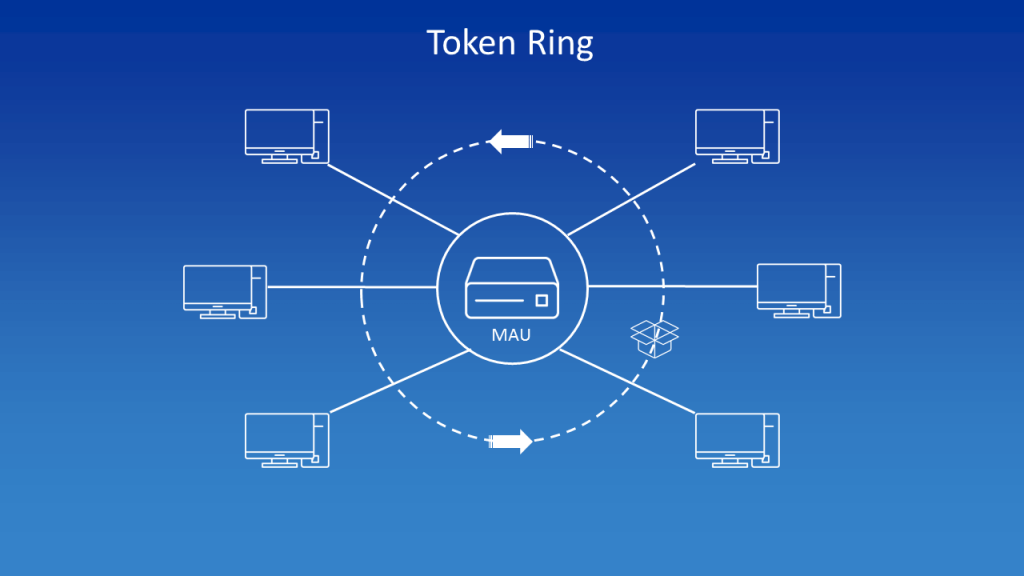Introduction
The IEEE 802.3 and 802.5 LANs, discussed in the previous sections, having data transfer rate in the range of 10 Mb/s to 16 Mb/s have served the purpose very well for many years. But with the availability of powerful computers at a low cost and emergence of new applications, particularly based on multimedia, there is a growing demand for higher network bandwidth. The combined effect of the growth in the number of users and increasing bandwidth requirement per user has led to the development of High Speed LANs with data transfer rate of 100 Mb/s or more.
The high-speed LANs that have emerged can be broadly categorized into three types based on token passing, successors of Ethernet and based on switching technology. In the first category we have FDDI and its variations, and high-speed token ring. In the second category we have the fast Ethernet and Gigabit Ethernet. In the third category we have ATM, fiber channel and the Ether switches. In this lesson we shall discuss details of FDDI – the token ring based high speed LAN.
FDDI
Fiber Distributed Data Interface (FDDI), developed by American National Standards Institute (ANSI) is a token passing ring network that operates at 100 Mb/s on optical fiber-medium. Its medium access control approach has close similarity with the IEEE 802.5 standard, but certain features have been added to it for higher reliability and better performance. Key features of FDDI are outlined in this section.
The FDDI standard divides transmission functions into 4 protocols: physical medium dependent (PMD), Physical (PHY), media access control(MAC) and Logical link control(LLC) as shown in Fig below. These protocols correspond to the physical and data link layer of OSI reference model. Apart from these four protocols, one more protocol which span across both data link and physical layer (if considered of OSI), used for the station management.

FDDI protocols
Medium
As shown in Table 1, the standard physical medium is multi-mode 62.5/125-micron optical fiber cable using light emitting diode (LED) transmitting at 1300 nanometres, as the light source. FDDI can support up to 500 stations with a maximum distance of 2 Km between stations and maximum ring circumference of 200 Km. Single-mode 8-10/125-micron optical fiber cable has also been included in the standard for connecting a pair of stations separated by a distance in excess of 20 km.
The standard has also been extended to include copper media – Shielded Twisted Pair (STP) and some categories of Unshielded Twisted Pair (UTP) with a maximum distance of 100 m between stations. FDDI over copper is referred to as Copper Distributed Data Interface (CDDI).
Optical fiber has several advantages over copper media. In particular, security, reliability, and performance are all enhanced with optical fiber media because fiber does not emit electrical signals. A physical medium that does emit electrical signals (copper) can be tapped and therefore vulnerable to unauthorized access to the data that is transmitted through the medium. In addition, fiber is immune to radio frequency interference (RFI) and electromagnetic interference (EMI). Fiber historically has supported much higher bandwidth (throughput potential) than copper, although recent technological advances have made copper capable of transmitting at 100 Mbps or more. Finally, FDDI allows 2 Km between stations using multimode fiber, and even longer distances using a single mode fiber.
Table 1 FDDI Physical layer specification

FDDI uses 4B/5B code for block coding. The 5-bit code is selected such that it has no more than one leading zero and no more than two trailing zeros and more than three consecutive 0’s do not occur. Table 2shows the encoded sequence for all the 4-bit data sequences. The This is normally line coded with NRZ-I.
Table 2 4B/5B encoding




Comments are closed